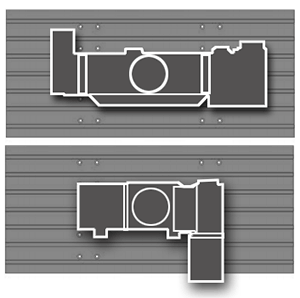Clayton Precision - Ejector Seats and Critical Components
It’s a startling fact that around 1 in 10 ejector seats installed has actually been deployed in an emergency.
You’d be hard pressed to imagine a situation where the reliability of mechanical parts, for the few seconds when they do their job, could be more critical.
Aerospace component manufacturer Clayton Precision Engineering Ltd depends on accurate and repeatable machining of high-quality, complex parts for ejector seats that simply can’t afford to fail.
Founded 50 years ago, in Twickenham, Clayton Precision’s original owners relied mostly on local business for their livelihoods. It’s unlikely, back in those relatively dark ages of manufacturing technology, that they could have imagined that, one day, they’d be making parts for the latest fighter jets.
Ten years ago Jan van Jaarsveld bought the company and made the decision to concentrate on the aerospace industry. Today around 90% of their business comes from this sector, including a long-term contract to supply parts and assemblies for the world’s largest manufacturer of ejector seats.

“The business is going from strength to strength,” says Mr van Jaarsveld. “Three years ago Clayton merged with another specialist engineering company, R A Fores Ltd. This merger dictated a move into a second unit, more than doubling our floor area, which we began filling with new Haas CNC equipment.
“We like the Haas machines, they’re quick, accurate and reliable and the back up has been outstanding. Over the years, I’ve invested heavily in Haas; currently we have two Mini Mills, a VF-1 and seven VF-2SS Super Speed verticals all fitted with 4- or 5-axis rotary tables. The most recent VF-2SS was equipped with a 5-axis trunnion table.”

“The new 5-axis machine has made a huge difference. It’s currently producing L168 aluminium components for ejector seats. The trunnion’s full simultaneous 5-axis motion has reduced the number of operations from eight to just two. It’s cut the previous cycle time by 25%, and the reduced number of setups has increased repeatable accuracy, maintaining conformity throughout the part run.
“It goes without saying that accuracy is vital when you’re dealing with parts that save lives. Our inspection department maintains quality control. All testing equipment is calibrated to national standards and we operate a ‘Total Quality Management Policy’ with recorded inspection undertaken at every stage of the job.”
Haas Automation’s VF-2SS has 762 x 406 x 508mm travels, comes standard with a 12,000-rpm spindle, a 24+1 side-mount tool changer for tool changes that take less than 1.6 seconds tool to tool. High-pitch ballscrews and high-torque servo-motors provide rapids of 35m/min.
Clayton Precision programs its Haas machines offline, using a combination of OneCNC and GibbsCAM. Programs are then transferred to the control via USB.
“Our parts are complex and tolerances are very tight, but having a robust and reliable process means we can still be strong and competitive.”
“Many of the large aerospace companies are sourcing a lot of parts from lower-cost regions. We have to focus on producing higher-value, more complicated parts and assemblies, and make the processes more efficient,” Mr van Jaarsveld says.
“Willingness to invest in the necessary technology is paramount,” he stresses. “Without forward-looking commitment, ‘working smart’ would only be a goal around here, instead of a daily reality.”
“In the end, if we can use the latest technology to increase our work efficiency, we will,” emphasises Mr van Jaarsveld. “Similarly, if we can employ multi-axis equipment to reduce setups, or use 12,000 rpm machines, that is exactly what we’ll do. That’s how we’ve built a competitive edge, and how we’ve managed to grow our business 200% in the last three years,” he adds, with a smile.
“We’re not displacing anyone in our workforce,” Mr van Jaarsveld points out, “we’re enhancing them. Finding experienced CNC operators is getting harder and harder. We hire people we have faith in, and train them ourselves. Haas machines are easy to learn and easy to use – they’re much better organised and more intuitive than others.”
“We currently employ 28 staff, including two full time apprentices. Clayton has close connections with a new aerospace college in Feltham, opening later this year, so we’ll take on and train more as the business expands. Our objective is to increase our machining capacity as we increase our skilled staff. That’s how we’ll compete in the world market, and how we’ll be around for another 50 years.”

The new 5-axis machine has made a huge difference. It’s currently producing L168 aluminium components for ejector seats. The trunnion’s full simultaneous 5-axis motion has reduced the number of operations from eight to just two. It’s cut the previous cycle time by 25%, and the reduced number of setups has increased repeatable accuracy, maintaining conformity throughout the part run.
Jan van Jaarsveld




